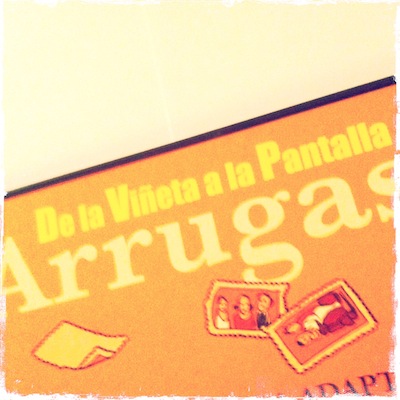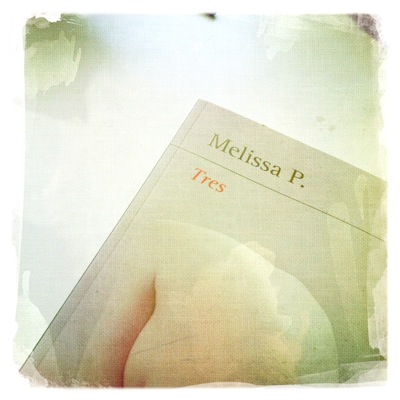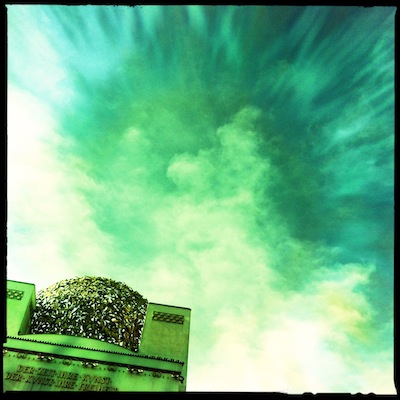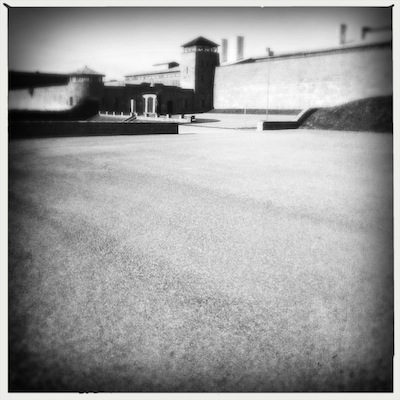Taksim de Juan Sardá
Juan Sardá’s Taksim

Es común que todos nosotros, y más aún en tiempos convulsos como los que vivimos, pensemos en qué nos deparará el futuro; a nosotros y al mundo.
En Taksim, Juan Sardá nos ofrece como respuesta un retrato de una Tierra futura donde el capitalismo ha desplazado del todo a la democracia, donde las personas son sustituidas por robots (sin que esto les traiga el igualitarismo) y donde las marcas han robado incluso los nombres con los que nosotros, personas del pasado, conocemos en la actualidad a países y territorios.
¿Se dirige, realmente, nuestro mundo hacia este descorazonador desenlace? Solo puedo decir que Juan nos ofrece una respuesta clara y tranquilizadora: las personas del futuro, como nosotros, persistirán en su búsqueda de qué es amar.
It is common for everyone of us, and all the more in this insecure times we live in, to think in what future will bring, to us and to the world.
In Taksim, Juan Sardá gives us, as an answer, the portrait of a future Earth where capitalism has completely displaced democracy, where people are substituted by robots (not even bringing them equality) and where trademarks have stolen even the names that we, people of the past, use to know countries and territories.
Is our world going towards his disheartening end? I can only say that Juan offers us a resolute and soothing answer: people of the future, just like us, will persist in their quest to understand what is loving.
La sal de la vida de Françoise Heritier
Françoise Heritier’s La sel de la vie

Ante algunos relatos, ensayos o novelas, a veces es común pensar: ¡Esto podría haberlo escrito yo! Pero en pocas ocasiones, como la presente, tendríamos que escribirlo nosotros… de verdad.
En esta "Carta a un amigo" (pues no es más que eso), la antropóloga Françoise Heritier realiza una lista de todas aquellas cosas, pequeñas o grandes, breves o duraderas, placenteras o dolorosas, que para ella constituyen esa "sal de la vida" que todos los seres humanos debemos aprender a disfrutar.
Una rápida mirada al texto nos hace sorprendernos de cómo el trabajo, las obligaciones y tantas distracciones nos hacen desviarnos de lo verdaderamente importante de la vida.
¿Te atreves a enfrentarte a todo aquello que quizá estás ignorando… y constituye la sal de tu vida?
When reading some stories, essays or novels, it is common to think: "I could have written this!". But in seldom occasions, as the present one, we should really actually write it.
In this 'letter to a friend' (which is really what it says), anthropologist Françoise Heritier lists many things: from small to big, from brief to everlasting, to pleasing to painful, that for her are 'the salt of life' that every human being should learn to enjoy
A quick glance at the text makes us aware at how work, everyday duties and distractions make us constantly deviate our path from the really important things in life.
Do you dare confront everything you are ignoring… and which is the 'salt of your life'?
Arrugas, la exposición en la Academia de Cine
Wrinkles, the exhibition at the Academia del Cine

Si alguna vez habéis tenido curiosidad por conocer el proceso de adaptación de una obra (en este caso, el archiconocido comic de Paco Roca) de su formato original a la pantalla de cine, tenéis una ocasión en la Academia de Cine de Madrid.
En esta exposición, pequeña pero muy completa, podréis ver todo tipo de materiales de trabajo que documentan este proceso: desde la construcción del cómic original, pasando por bocetos de personajes, páginas de guión, notas manuscritas, pruebas de color, de animación, e incluso páginas de la partitura original.
Una exposición que es también una excusa para conocer un edificio, el de la Academia, y su programación cultural, que incluye frecuentes proyecciones, donde poder ver en pantalla grande inesperados clásicos del cine.
If you ever wanted to know about the adaptation process of a narrative work (in this case, Paco Roca's widely known comic book) from its original form to the cinema screen, you have an opportunity in Madrid's Academia de Cine.
In this exhibition, small but comprehensive, you can see all kinds of documents that narrate this process: from the original comic book's construction to character sketches, script pages, handwritten notes, color tests, animation proofs and even pages of the original soundtrack.
An exhibition that is also an excuse to know the building of the Academia, and its cultural planning, which includes movie projections, where you can see in the big screen a great deal of unexpected cinema classics.
Saul Bass en el Círculo de Bellas Artes
Saul Bass at the Círculo de Bellas Artes

El tiempo ha tratado muy bien la obra de Saul Bass, y aún hoy, cientos de diseñadores parten directamente de sus ideas, experimentos tipográficos, enfoque visual, figuras recortadas (tan influidas por la época de papel y tijera de Matisse) y áreas planas como Saul Bass.
En esta exposición, no solo se hace un repaso de sus carteles más famosos para cineastas como Otto Preminger, Alfred HItchcock o Billy Wilder; también podremos ver, proyectadas, toda una colección de títulos de crédito de estas y otras películas.
Un diseñador cuyo trabajo no se quedó en el papel. ¿Sabíais que la famosa escena de la ducha de "Psicosis" fue visualmente concebida por Saul Bass? Aquí podréis ver los dibujos originales para el storyboard.
Time has treated well Saul Bass' work, and still today, hundreds of designers are inspired by his ideas, typographic experiments, visual focus, plain areas and cut-out human figures (so influenced by the scissors-and-paper era of Mattisse).
In this exhibition, along with a review of his most famous posters made for filmmakers as Otto Preminger, Alfred HItchcock or Billy Willder, you will be able to see a projection of many of his credit titles for those and other directors.
A designer, then, whose work did not ultimately stay only on paper. Did you now that the famous scene in "Psycho" was visually conceived by Saul Bass? Here you can see his original storyboard designs.
Todo lo que deberías saber antes de amarme de Gerard Guix
Gerard Guix’s Todo lo que deberías saber antes de amarme

Hay pocas novelas en que, de forma casi (¿o no?) literal, el autor desnude su alma, sus sentimientos y su manera de vivirlos, expresarlos y exponerlos, especialmente por lo que se refiere a una sensación tan compleja como el amor; no el reposado, distante e idealizado, sino el que irrumpe en nuestras vidas, lo cambia todo a su paso, y va y viene como un torbellino, alterando constantemente nuestra forma de vernos a nosotros mismos, nuestras relaciones, nuestras amistades, nuestra familia e incluso la consideración que tenemos de nosotros mismos.
¿Estarías preparado para un amor así? ¿Sabrías soportarlo, sobrellevarlo, incluso disfrutarlo… o protegerte de él? Una pista que nos da Gerard para saber sobreponerse a un amor así es que tu vida podría adquirir las múltiples capas, misterios y recovecos que una caprichosa matroska rusa.
There are very few novels in which, in an almost literal (or not?) form, the author gets his soul naked, along with his feelings and his way of living them, expressing them and exposing them, specially regarding a feeling so complex as love; but not the tranquil, distant and idealized love, but the one that breaks into our lives, changing everything in sight, coming and going as a whirlwind, constantly altering the way we see ourselves, our relationships, our friendships, our families and even the consideration that we have about us.
Would you be ready for loving this way? Could you cope with it, endure it, even enjoy it… or protect yourself from it? One clue that Gerard gives us to overcome such kind of love is that your world, your life, your way of living… could acquire the multiple layers, mysteries, twists and turns that a russian matryoshka hides.
Tres de Melissa P.
Melissa P.’s Three

Siendo la literatura un medio al que los sentidos deben someterse, a través de la palabra, para encontrar su excitación, es curioso cómo en tan pocas novelas, por táctiles que sean sus impresiones, los procesos sensoriales más elementales apenas son invocados.
En la obra de Melissa, sin embargo, el cuerpo y sus procesos, por orgánicos, sexuales, placenteros o dolorosos, son siempre parte de la acción, definen la trama y dirigen a sus personajes.
¿Hasta qué punto, pues, controlamos nuestro cuerpo? ¿O son las sensaciones que de él se desprenden las que nos controlan a nosotros… y a nuestros destinos?
Pocas veces, como en Tres, el cuerpo se siente tan libre en sus ataduras y tan prisionero de su libertad.
Being literature a medium to which senses must submit themselves, through the written word, to find their arousal, it is odd to realize that in so few novels, no matter how tactile their impressions, sensorial processes are barely invoked.
In Melissa's work, nonetheless, the body and those processes, no matter how organic, sexual, pleasant or painful, are always part of the action, define the plot and drive the characters.
Up to what extent do we control our body? Or are the feelings that arise from it the ones that control us… and our destinies?
Seldom, as in Three, the body feels free in shackles while being a prisoner of freedom.
Cómo fracasé en la vida de Santini y Gatignol
Santini and Gatignol’s Comment j’ai rate ma vie

¿Cómo fracasar en la vida? De primeras, podría parecer que esto es, de forma lógica, todo lo contrario a lo que cualquiera de nosotros podría querer.
Sin embargo, como demuestran Santini y Gatignol en este breve, conciso y potente libro ilustrado para adultos, lo que hacemos en la vida, pensando en triunfar, nos lleva en demasiadas ocasiones a fracasar en ese objetivo que deberíamos tener tan presente, y que tantas veces es lo primero que olvidamos: vivir.
Con un dibujo sencillo, rayando en lo minimalista, una narrativa absolutamente desprovista de cualquier retórica, y que va al grano con un estilo directo y acertadamente desapasionado.
Un libro que esconder en casa, para encontrarlo de vez en cuando y preguntarnos si estamos consiguiendo fracasar en la vida.
How to fail in life? On a first thought, it could seem the opposite to anything any of us could desire.
Nonetheless, as Santini and Gatignol show us in this brief, concise and powerful illustrated book for adults, sometimes the decisions we take in life, thinking in terms of success, makes us fail in what we should really have in mind, and that we so many times forget: to live.
With simple, almost minimalist illustrations, a narrative devoid of any trace of rhetorics, this book hits the spot with a direct, dispassionate style.
A book, in the end, to hide at home, to find it at different stages of our life and thus ask ourselves if we are succeding at failing in life.
Diario de Viena, y VII: el cielo de Viena
Vienna Diary, and VII: Vienna’s sky

Ligera de vuelo la mente, leve de ánimo el alma y liviana la vida de luz aventada,
lejana la noche, vigilia cansada, del duro camino hace tanto emprendido,
corriendo tras olas de sueño y recuerdo, murientes tan cerca del risco afilado,
a tierras cercanas de olvido indigno, de miedo perpetuo, de sombras de antaño,
el cielo promete, surcado de guiños de oro, cornejas valientes y vidas pasadas,
la vida soñada a los fieles amantes, los que ahora se atreven, como héroes de entonces.
Light in its flight the mind, slight in its spirit the soul and brief is the life of winnowed light,
far is the night, tired its wake, from the so cold trip long since embarked,
running behind sleep-like waves, dying so close to the sharpened ridge,
near shameful lands of obscurity clad, of everydays fears, of yesterdays shades,
of golden gleams, valiant crows, and long past lives, the sky promised
a life once dreamt to the daring ones, loyal lovers, as bygone heroes.
Diario de Viena, VI: Triángulo Azul
Vienna Diary, VI: Blue Triangle

Tras siete años de trayecto, llegó a donde por fin, toda pregunta habría de ser respondida.
Pero lo que allí halló fueron decenas, cientos, decenas de miles más de esas preguntas, enigmas y silencios, tantos como las piedras amontonadas de aquellos muros, como las piedras enterradas de aquella escalera, como las, en fin, piedras inertes que coronan la vida humana y revelan a los vivos dónde yace lo poco que queda de un alma al abandonarse al descanso.
¿Nunca terminaría el misterio? ¿Nunca, una respuesta? ¿Nunca encontraría un descanso el afan de saber, de imaginar, qué se sentía, cómo se vivía, sobrevivía, sufría y moría allí?
Entonces comprendió, mientras las voces vivas se apagaban, que su misión no era responder a todo aquello, sino transmitir esa inmensa, pesada, oscura duda a todo hombre viviente.
After seven years of travel, he arrived where, at last, every question woud be answered.
But what he found there was tens, hundreds, tens of thousands of those questions, enigmas and silences, as many as the stones piled up on those walls, as the buried stones in those stairs, as the lifeless stones that crown human life and reveal to the living where lies the little that is left from a soul when abandoned to rest.
Would the mystery never end? Never, an answer? Would it never rest, the eagerness to know, to imagine, how it felt, how did they live, survive, suffer and die?
Then he understood, as the living voices faded, that his mission was not to answer all that… but to pass on that heavy, immense, dark doubt to every living man.
